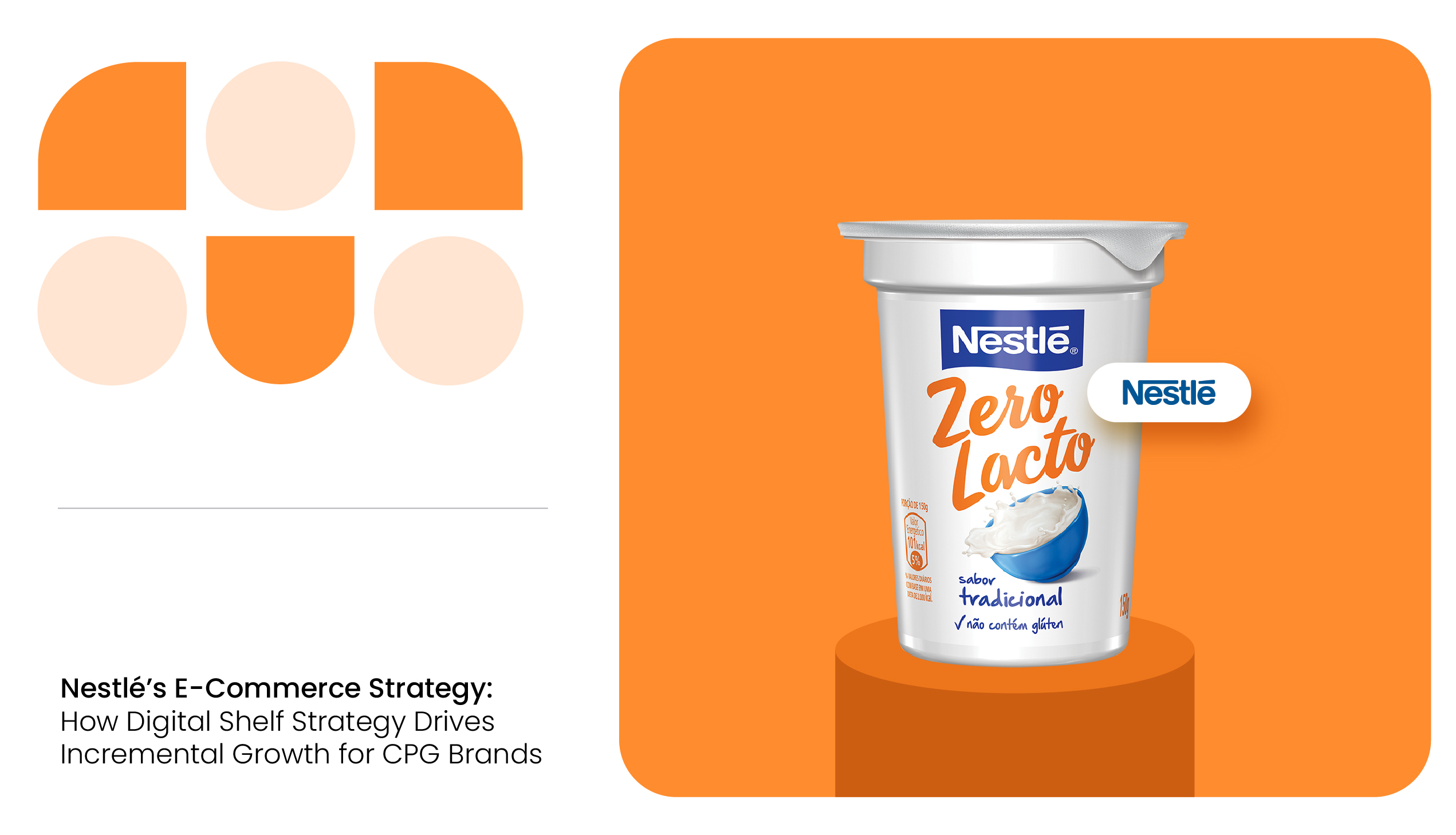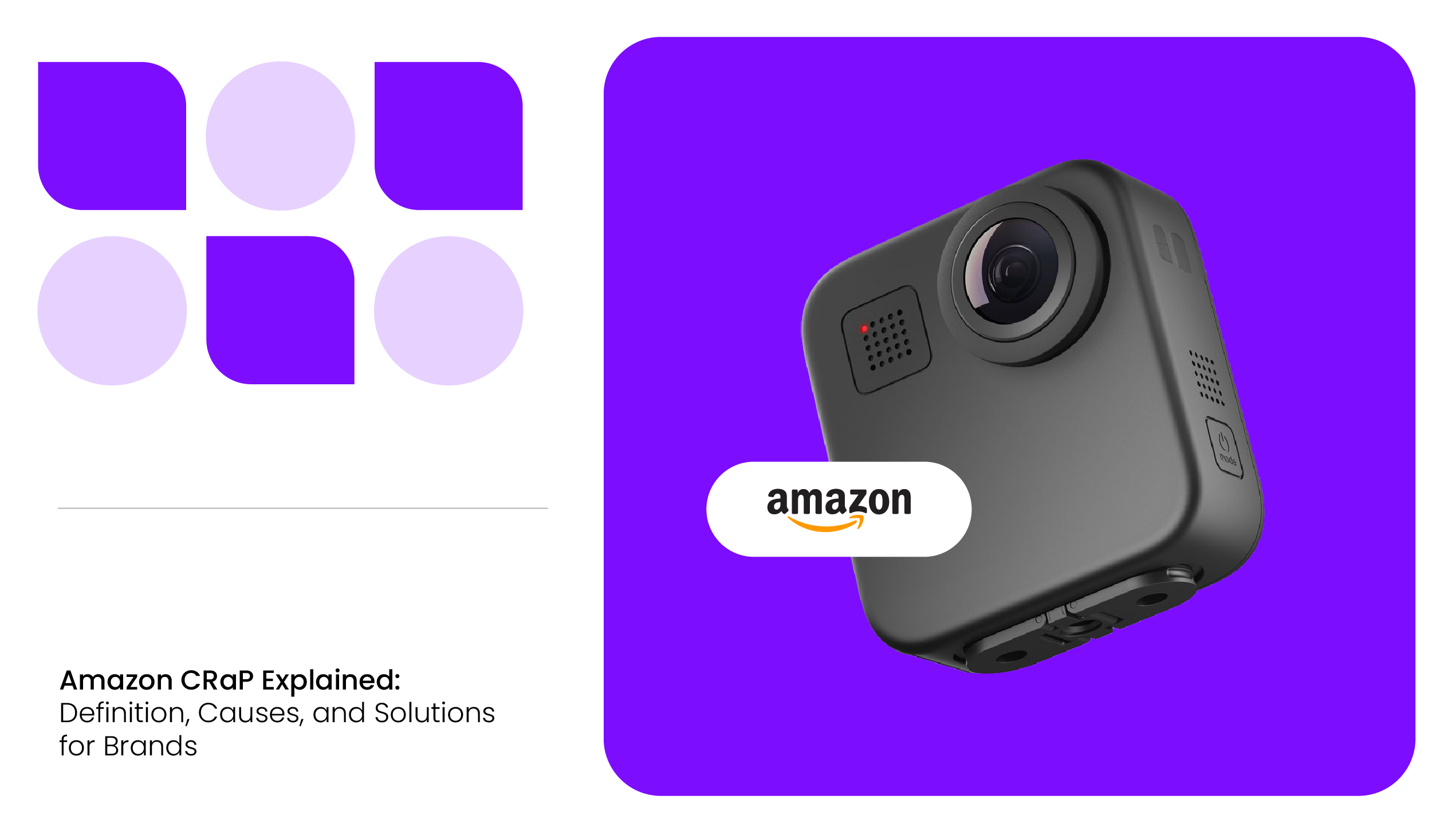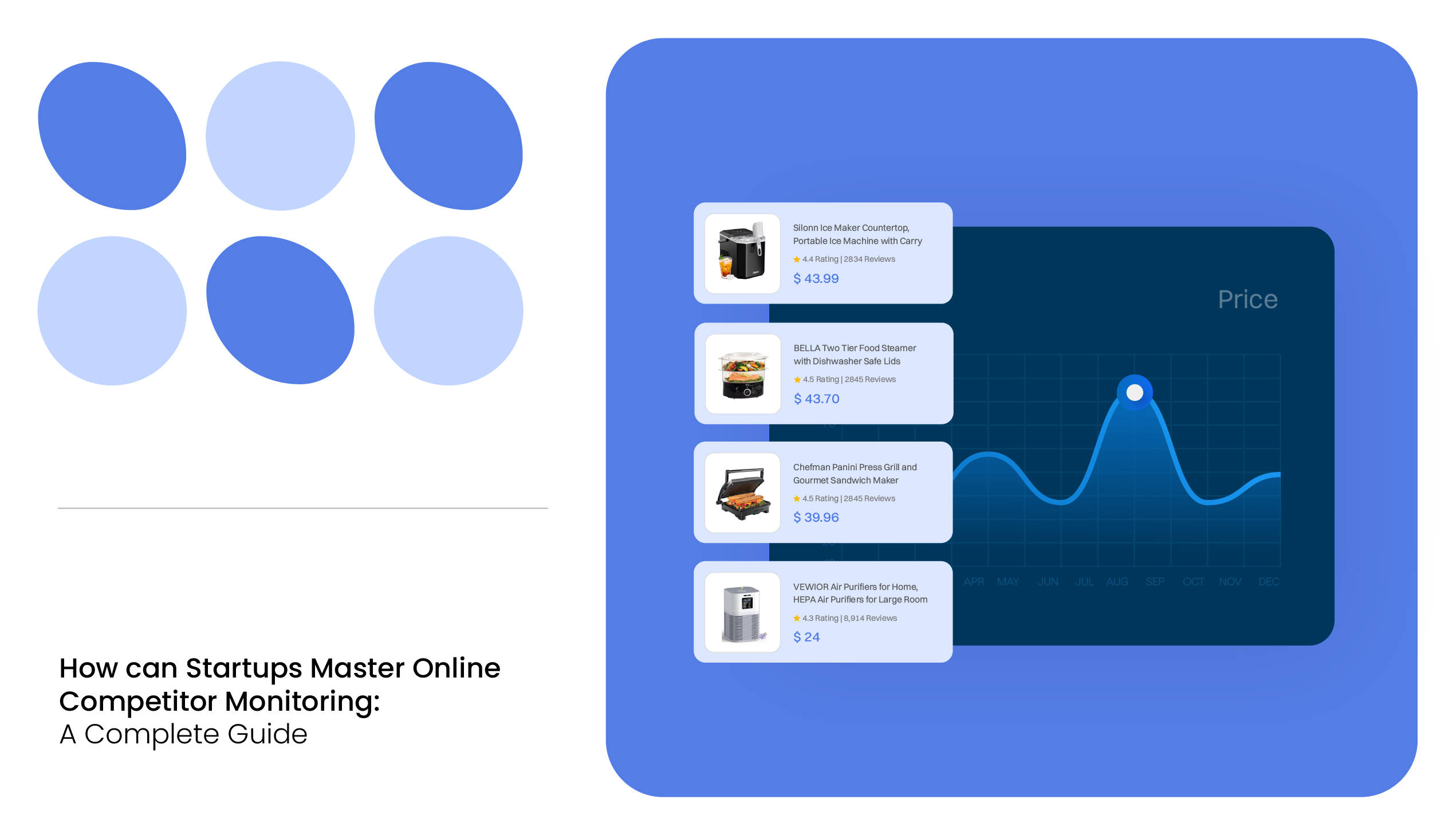Modern shoppers aren’t easy to read. They bounce between platforms, skim five-star reviews, abandon carts like it’s a sport, and sometimes buy hours or days after their first visit.
But what if you could tell who’s actually ready to buy, in real time? That’s exactly what AI in e-commerce makes possible. We’re talking about predicting behavior, not reacting to it. And that changes everything.
The global predictive AI market is estimated to reach $108 billion by 2033. E-commerce brands now have the tools to anticipate buyer behavior with remarkable accuracy. This shift is transforming how businesses engage with customers, moving from reactive strategies to proactive, data-driven decision-making.

In this blog, we’ll break down how AI and machine learning (ML) are transforming how brands understand their customers, craft their marketing, and close more sales. We’ll explain how AI ML drive e-commerce sales by identifying purchase intent before it turns into a transaction and what your team can do to act on those signals.
If you’re a brand manager or digital shelf strategist who is trying to stretch every marketing dollar, this is for you.
The Challenge: Understanding E-Commerce Purchase Intent
First, let’s understand the key challenges in identifying true purchase intent. Recognizing these obstacles helps put the value of AI-driven solutions into perspective.
Multi-Channel Browsing
Today’s consumers don’t follow a linear path to purchase. They might start on Google, spot a product in a YouTube review, check Instagram for social proof, compare on Amazon, and eventually buy directly from your website. This fragmented consumer buying process makes it difficult to track behavior with traditional analytics.
AI in e-commerce helps unify this fragmented data across channels and devices, giving brands a comprehensive view of user journeys. Predicting intent requires seeing the full picture, not just isolated clicks.
Influence of Social Proof & Urgency
Social proof, like reviews and ratings, has become a core part of the buying decision. Add FOMO triggers like limited-time deals or low inventory alerts, and you’re tapping into powerful psychological levers. But it’s hard to tell which triggers actually convert without data.
AI monitors these signals and correlates them with conversions. For example, machine learning models can identify whether a 5-star review or an “Only 2 Left!” tag led to a purchase, helping marketers fine-tune their strategies.
READ MORE| Want to understand how customer reviews influence high-intent purchases? Check out Decoding Reviews and Customer Behavior: How Positive Feedback Drives High-Intent Purchases.
High Cart Abandonment
Cart abandonment is the silent killer of conversion rates. Over 70% of shoppers abandon carts, but not all are lost causes. Some are still evaluating, others are price-sensitive, and some are just distracted.
With predictive scoring, AI identifies which abandoners are likely to return and which need nudging. Brands can then tailor their recovery strategy with targeted emails, retargeting ads, or exclusive offers, based on intent data.
Data Overload
The modern e-commerce stack produces overwhelming volumes of data: clickstreams, session duration, heatmaps, CRM logs, support tickets, and more. Parsing through it manually is not scalable.
Machine learning e-commerce conversions happen when models can extract actionable insights from this chaos. These models identify key behaviors like time on site or navigation depth that often precede a sale.

How AI and ML Predict Purchase Intent and Boost Conversions
AI and machine learning don’t just analyze data; they help brands act on it. From detecting intent to driving personalized experiences, here’s how these technologies turn behavioral signals into real conversion opportunities:
Data Collection & Integration
A strong AI strategy begins with data. Predictive models need rich, varied inputs: browsing behavior, cart history, referral sources, geo-location, device type, and even external data like weather or local events.
AI integrates these datasets to create a unified customer profile. This ensures no signal is missed and gives the algorithm a complete view of what drives each user’s behavior.
Pattern Recognition with ML
Machine learning is trained on historical datasets to detect patterns that humans often miss. For example, a customer who revisits a product page twice, compares prices, and adds to a wishlist may be 80% likely to convert.
The model identifies these patterns, learns from them, and applies them to new users in real time. Let’s have a deeper look at how ML increases e-commerce conversion:
A recent study used publicly available e-commerce data to build a machine learning model that could predict which users were likely to make a purchase. By narrowing down thousands of data points to just the five most telling signals: things like how often someone viewed a product, how long they stayed on the page, and whether they added it to a cart.
Once those signals were identified, they trained a custom model using a blend of proven ML techniques. And the results? The model didn’t just work; it outperformed other top machine learning methods across multiple testing scenarios. That means it stayed accurate whether the dataset was split 50/50 or 80/20 for training and testing.
Why does that matter for your brand? Because when you know, confidently, who’s ready to buy, you stop wasting time and money on low-intent traffic. You can prioritize high-intent users, customize offers in real time, and get more carts across the finish line.
Predictive Scoring
Each user is assigned a dynamic intent score based on their behavior. The score changes as new actions are taken. A user who reads reviews and adds an item to cart has a higher intent than someone who just scrolled through a landing page.
These scores help brands prioritize leads, retarget the right audiences, and trigger personalized responses. It’s precision marketing at scale, and a key reason why AI ML drive e-commerce sales.
Real-Time Personalization & Actions
What good is predicting intent if you don’t act on it? That’s where real-time personalization comes in. AI enables real-time interventions: pop-ups, dynamic pricing offers, live chat prompts, and email nudges, all triggered by behavior.
For example, if a user with a high intent score hesitates on the checkout page, AI can instantly display a discount code. These micro-adjustments are how AI increases e-commerce conversion rates.
READ MORE | Want to understand how digital shelf analytics enhances e-commerce performance? Explore Transforming E-Commerce Business with Digital Shelf Analytics.
Use Cases: How AI ML Drive E-Commerce Sales and Conversions
From real-time personalization to dynamic pricing, here’s how leading e-commerce brands are putting AI and ML to work to boost conversions and drive smarter growth directly.
Personalized Product Recommendations
Recommendation engines have evolved from “Best Sellers” to “Just for You.” By analyzing purchase history, search behavior, and user preferences, AI personalization surfaces products a customer is most likely to buy next and can increase conversions by up to 15% and boost average order value.
Taking personalization a notch up, Amazon’s new AI-powered Interests feature automatically finds products on behalf of the customer based on their interests. Once prompted, it continuously scans through new inventory and proactively notifies customers about relevant products that match their preferences.
READ MORE| Interested in learning more about product matching in e-commerce? Don’t miss Increase Conversions with Product Matching: A Guide for Ecommerce Stores.
Predictive AI Customer Segmentation
Predictive AI customer segmentation uses machine learning algorithms to group shoppers based on what they’re likely to do next, not just who they are or what they did in the past.
This method creates dynamic customer profiles instead of relying on static demographics or outdated segments. It helps businesses tailor their messaging, anticipate individual customer needs, and deliver more relevant experiences that lead to higher engagement and conversions.
One of the best examples is Sephora’s Beauty Insider loyalty program, which uses AI-powered predictive analytics and customer segmentation models. It identifies and predicts trends and preferences among repeat customers to provide personalized offers, rewards, and discounts based on purchase intent.
Predictive Targeting & Marketing Campaigns
Not all store visitors are the same. Predictive targeting lets you tailor campaigns only to those with high conversion likelihood. For example, AI and ML can analyze patterns and find that customers who interact with UGC and read 3+ reviews are 2x more likely to buy.
Armed with this intel, brands can segment their audience, suppress low-intent users from costly campaigns, and double down on warm leads. That’s how AI and ML drive e-commerce sales while reducing CAC.
eBay employs machine learning to enhance predictive targeting and marketing campaigns by analyzing user behavior and identifying high-intent buyers. They developed a multi-relevance ranking model that incorporates various purchase intent signals beyond simple clicks. By analyzing user interactions and behaviors, the model improves the relevance of recommended items, thereby increasing the likelihood of conversions.
Dynamic Pricing and Demand Forecasting
AI-powered pricing algorithms adjust product prices in real time based on factors like inventory, competitor pricing, time of day, and user behavior. This increases the margin without compromising on conversion.
Similarly, ML forecasts demand based on seasonality, trends, and even macroeconomic signals. Forecast accuracy means fewer stockouts or overstock situations, aligning supply with true customer intent.
Enhancing Customer Experience with Agentic AI
Agentic AI takes customer experience to the next level. It perceives data from multiple sources, identifies key features, and uses a large language model to evaluate the data and generate actionable insights. It then autonomously executes tasks based on the plan, continuously learning from feedback to improve performance over time.
AI chatbots resolve customer queries 24/7, removing friction from the shopping process. Predictive search tools complete a shopper’s query even before they finish typing. Visual search lets users upload images and find similar items.
A great example of agentic AI in action is Sephora’s chatbot, Sephora Virtual Artist. It not only recommends products based on customer preferences but also learns from every interaction. It analyzes data from users’ past behavior and suggests personalized beauty products, making the shopping experience more intuitive and efficient.
Each of these experiences reduces drop-off rates and keeps users engaged. When customers find what they want faster, they convert faster. That’s the direct impact of AI on e-commerce conversion rates.
Closing Notes
How much longer will you rely on guesswork when predicting customer behavior? AI and machine learning are transforming how e-commerce brands approach purchase intent, allowing you to move from assumptions to data-driven decisions.
By analyzing user actions in real-time, these technologies pinpoint high-conversion opportunities and personalize experiences at scale. The brands adopting AI to predict intent are already seeing a significant edge in their ability to convert shoppers into buyers.
Ready to turn predictions into profits? See how MetricsCart’s AI-powered digital shelf analytics solutions can drive smarter conversions and unlock your brand’s full potential!
Ready To Scale Your Brand and Drive Results? Unlock Your E-Commerce Potential Today!
FAQs
AI and machine learning enable e-commerce brands to predict consumer behavior, personalize experiences, and optimize marketing strategies. They help identify high-intent buyers, recommend products, and deliver targeted messages that drive conversions.
AI enhances customer experience, streamlines operations, and boosts sales by offering personalized recommendations, dynamic pricing, and predictive targeting, while automating processes for greater efficiency.
Machine learning identifies patterns in customer behavior, enabling predictive recommendations, dynamic pricing, and personalized offers, optimizing marketing efforts, and increasing conversion rates.
Machine learning predicts customer intent, personalizes the shopping journey, and targets the right audience. This leads to higher engagement, more relevant offers, and ultimately increased sales.
ML increases conversion by scoring customer intent based on real-time behavior, prioritizing high-value users, and delivering personalized recommendations. It helps brands focus on the right opportunities, boosting efficiency and sales.







